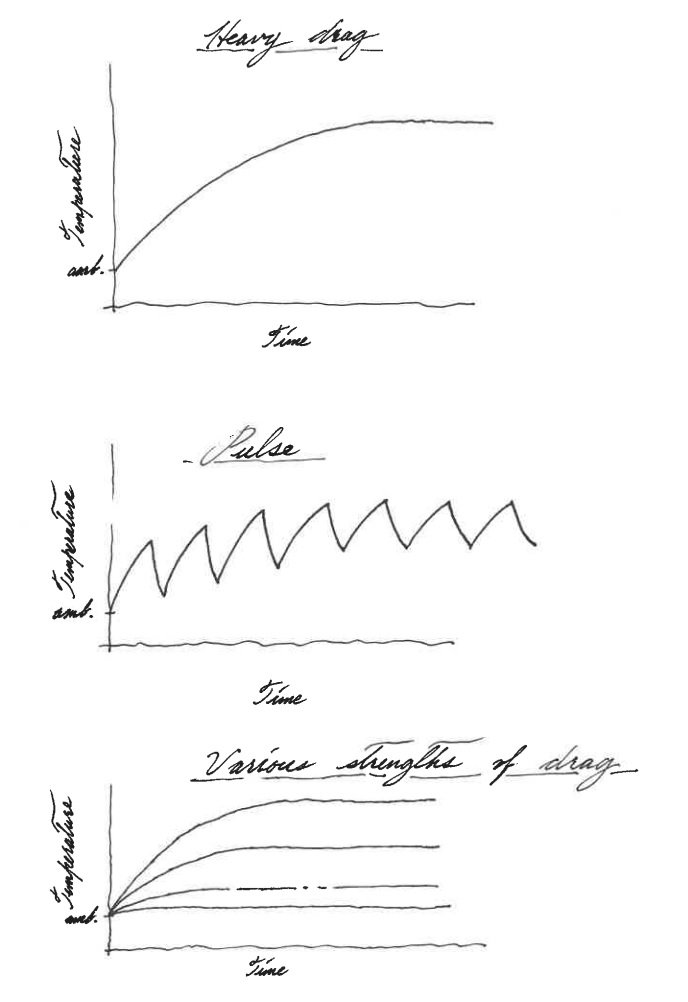Originally Posted by
cyccommute
I look forward to you telling me how wrong I am. Please provide graphs if you do so.
First of all let me say, although we disagree, I appreciate the effort of the graphs.
In your first few sets of graphs you're comparing someone pulsing between 45 and 35 mph, versus someone dragging continuously at 35 mph. Here of course the dragging would be hotter, due to the dragging having a lower average speed. You and I have never disagreed on this since day one.
Let's focus on the last pair of graphs, the final scenario. The problems I see are as follows:
- You're saying that dragging the speed 0.5mph slower than terminal velocity results in a 10C increase in rim temperature? If you refer to Wilson's graph you'll see that this is not the case. If you reference the axis, you'll see that if you're barely slowing the bike down from terminal velocity, then you're also barely raising the temperature. So please, let's not engage in this kind of exaggeration in an attempt to support our own point of view. It doesn't help anyone.
- You're letting the pulse braker's rim cool from 25C all the way back to 2.5C above ambient in the five seconds the brakes are off? If they are cooling from 25C to 2.5C in five seconds, does that mean in a few more seconds they will be at 0? I don't have rim cooling data, however let us be honest with each other and quit with all the BS. If you go down a big descent, even if you use your brakes optimally, your rims are going to be hotter by the time you finish compared to before you started. They're not going to be at 2.5C above ambient five seconds after you end your run. 2.5C you can't even perceive with your skin. If you invent a rim that can shed 22.5C of temperature in 5 seconds, you should stop talking about bikes and call Formula 1. They want to buy your technology.
If you fix these two errors you'll see that pulsing has a greater area under the graph compared to dragging. I'm at work right now but later I'll draw a graph for you by hand.
Edit: here it is, comments below:
- Standard heavy drag braking. Temperature increases until delta T is sufficiently high that cooling matches heating. At that point the temperature reaches a steady state and remains flat. Slope decreases as delta T increases.
- Standard pulse braking. Each interval follows the same curve as described above. That goes for both the heating and cooling phases. If you zoom out and squint you'll note that the entire shape also follows the same curve, despite it being jagged. As long as you're continuing to work that same on/off pattern with the brakes, your temperature is never going to go back down to ambient. It's going to zig zag up and down in some stabilized higher range.
- Drag braking at different strengths. Same graph as #1 above, just with multiple scenarios graphed together. If you're applying minimal brake lever force, then temperature stabilizes at barely above ambient. As brake lever force increases, the stabilization temperature increases. As you can see depending how hard you squeeze your brake lever, the temperature can stabilize higher or lower than in the pulse scenario. It just depends on how hard you squeeze that lever. If you squeeze with infinitesimally small force, the stabilized temperature will also be infinitesimally little above ambient. All the way until we trend down to zero brake force, at which point the temperature rise also reaches zero. All this time you're still technically continuously dragging. As you can see, dragging does not "ALWAYS" end up hotter than pulse braking, as you believe. It simply depends on how hard or lightly you drag. Either of the two braking techniques can end up hotter or cooler, depending how how hard you operate the brake levers.
